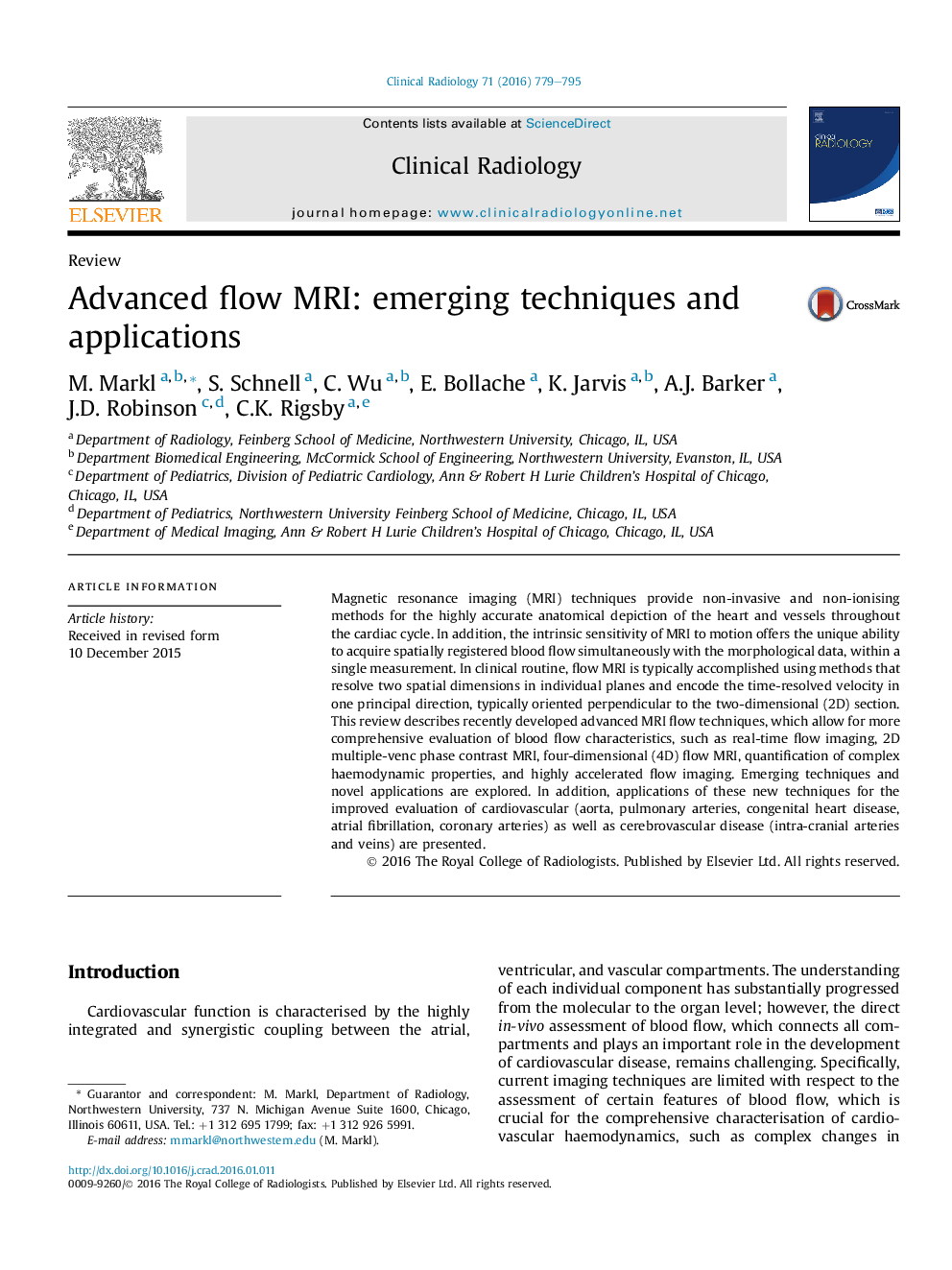| Article ID | Journal | Published Year | Pages | File Type |
|---|---|---|---|---|
| 3981167 | Clinical Radiology | 2016 | 17 Pages |
Magnetic resonance imaging (MRI) techniques provide non-invasive and non-ionising methods for the highly accurate anatomical depiction of the heart and vessels throughout the cardiac cycle. In addition, the intrinsic sensitivity of MRI to motion offers the unique ability to acquire spatially registered blood flow simultaneously with the morphological data, within a single measurement. In clinical routine, flow MRI is typically accomplished using methods that resolve two spatial dimensions in individual planes and encode the time-resolved velocity in one principal direction, typically oriented perpendicular to the two-dimensional (2D) section. This review describes recently developed advanced MRI flow techniques, which allow for more comprehensive evaluation of blood flow characteristics, such as real-time flow imaging, 2D multiple-venc phase contrast MRI, four-dimensional (4D) flow MRI, quantification of complex haemodynamic properties, and highly accelerated flow imaging. Emerging techniques and novel applications are explored. In addition, applications of these new techniques for the improved evaluation of cardiovascular (aorta, pulmonary arteries, congenital heart disease, atrial fibrillation, coronary arteries) as well as cerebrovascular disease (intra-cranial arteries and veins) are presented.
